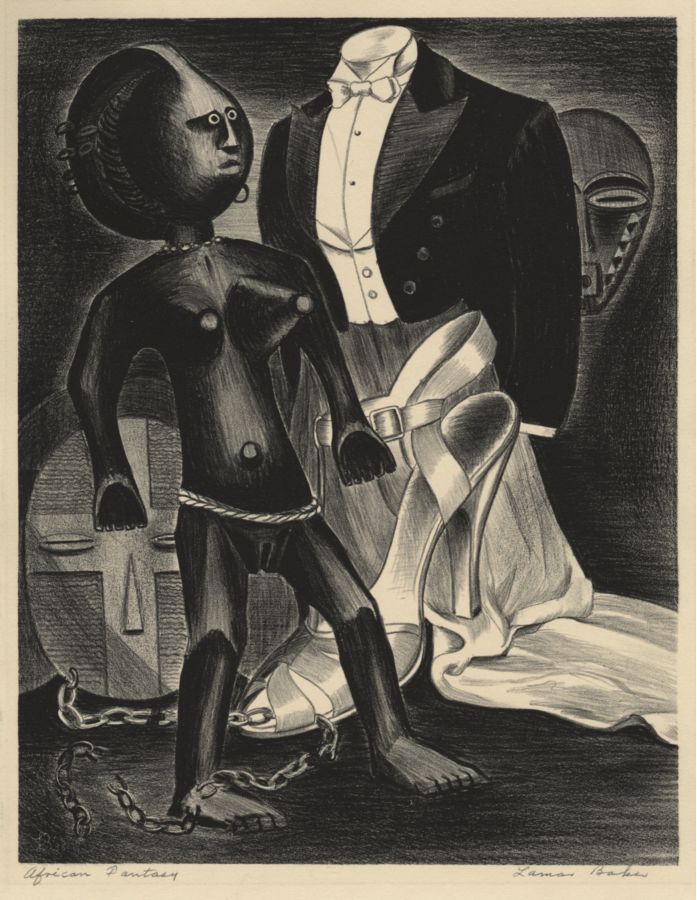African Fantasy is a lithograph created in 1936 by American artist Lamar G. Baker. This impression is pencil signed and titled and is thought to be from an edition of fifteen. The artist’s initials and the year ' 36 are found within the image in the lower left. African Fantasy was printed on ivory wove paper and the image measures 11-9/16 x 8-3/4 inches.
This Depression era lithograph is from the series Fantasies. Baker often used his imagery as commentaries on sociopolitical subjects. In African Fantasy, an African idol or fetish and a ceremonial mask are chained to two looming symbols of white Western wealth, a tuxedo and a nightmarishly oversized satin high heel. Baker did not shrink from exploring controversary, using his art as a platform to critique the hypocrisy of social norms and prejudices. While his work often falls into the Surrealist category it was often less veiled than many of his contemporaries.
Lamar Baker, painter, printmaker, and graphic artist, was born in 1908 in Atlanta, Georgia. He studied at the High Institute of Art in Columbus and the University of Georgia under Ben Shute. In 1935 he moved to New York to attend the Art Students League, studying printmaking under Kenneth Hayes Miller, Rico Lebrun, and Harry Sternberg. In 1942, Baker won a Julius Rosenwald Fund fellowship that enabled him to travel through Mississippi and Louisiana. He worked as a commercial artist for RKO Pictures in New York until 1951, when he returned to Georgia.
His work was included in the annual print exhibitions of the Philadelphia Art Alliance, 1937-39; the National Academy of Design, 1940, 1941, 1943; Survey of Contemporary Printmaking in the USA, the Carnegie Institute, 1941; Between Two Wars: Prints by American Artists, 1914-41, Whitney Museum of American Art, 1942; and the Albright-Knox Art Gallery, 1943. Solo exhibitions were mounted at the High Museum of Art, 1939; and the University of Georgia, 1951.
Baker is represented in the collections of the High Museum of Art, Atlanta, Georgia; the Columbus Museum, Georgia; the Mobile Museum of Art, Alabama; the National Academy of Design, the New York Public Library, and the Whitney Museum of American Art, New York; the Philadelphia Museum of Art, Pennsylvania; the Library of Congress and the Smithsonian American Art Museum, Washington, D.C.
Lamar Baker died in Talbotton, Georgia in 1994.



